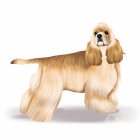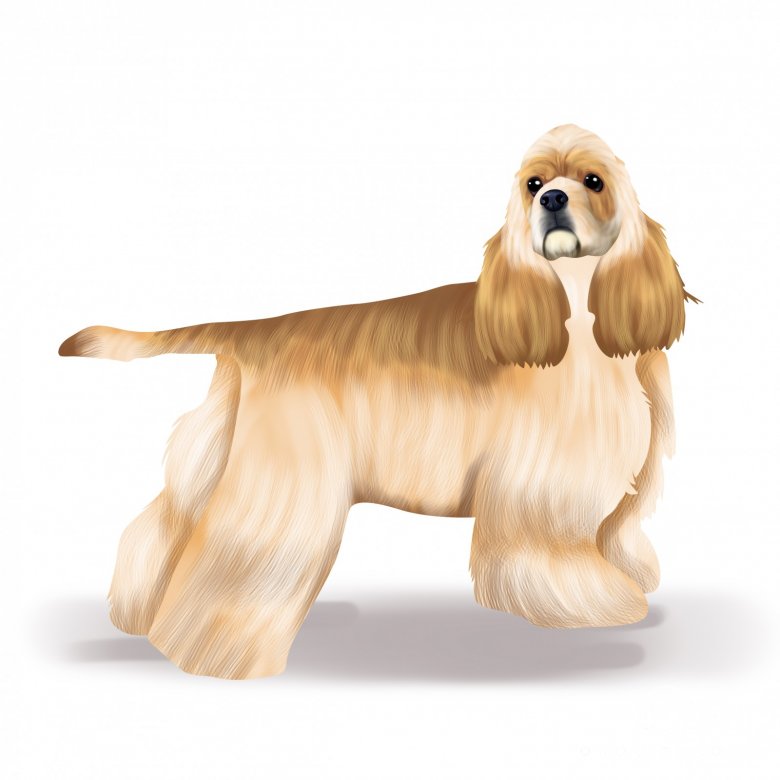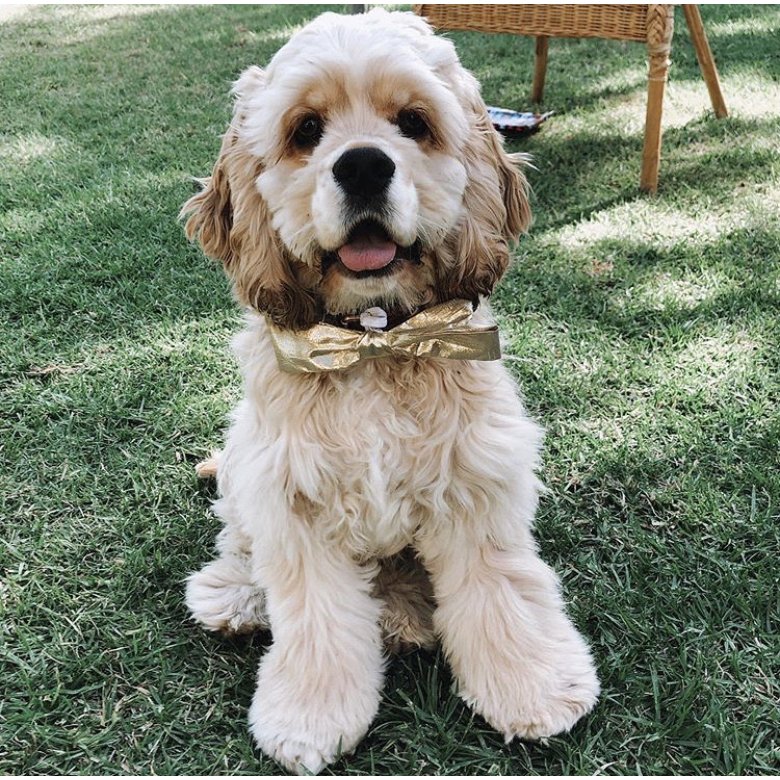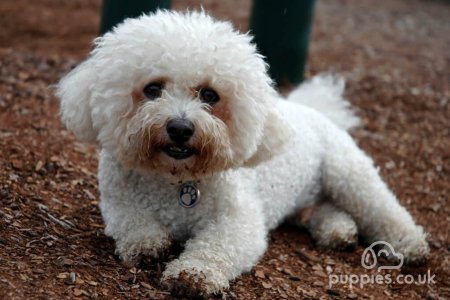For centuries, America and Britain have had much in common due to shared cultural history but also plenty of differences, too. It isn’t simply the way they spell words such as ‘cheque’ (check) or how they refer to cookers as stoves, but also in the differences in dog breeds such as the Cocker Spaniel. The American Cocker Spaniel is a great example of this. While they bear a shared ancestry with the English Cocker Spaniel, they are strikingly different. The American Cocker Spaniel (referred to in America simply as the Cocker Spaniel) is a beautiful breed that is perhaps better adapted to living in homes as a companion pet than its English counterpart. Regardless, both breeds have excellent qualities that make them an excellent puppy choice. American Cocker Spaniel puppies retain their adorable cuteness as adults and have an excellent temperament as well.
Why American Cocker Spaniels are Great
Some highlights of American Cocker Spaniels:
Adaptable: this breed is happy living in small homes as well as large, open environments.
Trainable: this breed is intelligent and can be trained easily.
First-time owners: thanks to its intelligence and trainability, American Cocker Spaniels are an ideal puppy choice for first-time owners.
Active: this breed loves to play and enjoys being kept busy.
Beauty: American Cocker Spaniels have a uniquely beautiful appearance prized by many and famous at dog shows around the world.
Things to Consider when Looking at American Cocker Spaniels for Sale
Some downsides to the American Cocker Spaniel:
Shedding: American Cocker Spaniels shed profusely and can leave a hairy mess all over carpets and furniture.
Grooming: due to their long coats of fur, American Cocker Spaniels require daily brushing and constant grooming.
Barking: this breed may bark more often than others and may bark compulsively.
Health: this breed is less healthy than others of its size and is prone to many common health issues.
History of the American Cocker Spaniel
All spaniels are believed to have originated from Spain, hence their name. They were imported into England during the 12th century and their breeding began in earnest in the following centuries. Two main variations existed, land spaniels and water spaniels. A small variant of the former type was gradually bred to flush woodcock, hence the name Cocker Spaniel. The first recorded spaniel to arrive in America was aboard the Mayflower as it landed in the colony to-be of New England in 1620. Spaniels were a popular choice of breed in America in the following centuries and were widely used as gundogs for hunters as well as for companionship due to their kind nature. Until the 1920s, there was no discernable difference between American and English Cocker Spaniels. The American Cocker Spaniel diverged from its English cousin in terms of appearance and temperament so much that by 1970 the American Cocker Spaniel was recognised by the Kennel Club of Great Britain as a separate breed (the Americans had made this distinction much earlier, in 1935). To this day, they remain amongst the most popular breeds in America. They had fallen in popularity for some time in the UK but are now an increasingly popular choice here as well.
Appearance
Naturally, American Cocker Spaniels are best compared to English Cocker Spaniels as a point of reference. American Cocker Spaniels are larger and have a distinct head which is more round and refined with large eyes and bushier eyebrows. This breed is also recognisable from his long, profuse coat of fur.
How big is the American Cocker Spaniel?
American Cocker Spaniels are small-sized dogs. Males grow on average to 37-39 cm in height, whilst females can grow up to 34-37 cm high.
How heavy is an American Cocker Spaniel?
Fully-grown adult male and female American Cocker Spaniels weigh between 11-14 kg on average.
What colour is the American Cocker Spaniel?
This breed has the following commonly-accepted coat colours:
Black variety;
Any solid colour other than black (ASCOB);
Parti-colour variety (two or more solid colours, one of which must be White);
Tan points.
Temperament
The American Cocker Spaniel is equable in temperament and does not show signs of timidity. He is known as the “Merry Cocker” thanks to his lovely, cheerful personality. This breed is intelligent and easy to train and is an all-around great puppy choice for first-time owners. When compared to its English cousin, the American Cocker Spaniel has become far less effective as a hunting dog over the decades and is far better suited to living in a home with a family or performing at dog shows, where they consistently perform well. This breed unfortunately suffers from many common health issues, requires frequent grooming, and sheds profusely, making it a high-maintenance pet.
Do American Cocker Spaniels make good guard dogs?
American Cocker Spaniels make poor guard dogs but are competent at performing watchdog duties, alerting owners to any suspicious activity.
Do American Cocker Spaniels bark a lot?
This breed has a tendency to bark frequently, which is exacerbated whenever they hear loud or unfamiliar noises. Train them well as puppies to keep their barking under control.
Are American Cocker Spaniels easy to train?
This breed can be trained very easily and is able to learn many complex commands due to its high intelligence. At dog shows, they consistently perform well due to their superb ability to obey and perform commands learned from training.
Are American Cocker Spaniels playful?
American Cocker Spaniels love to play, especially as puppies. They seem to have a keen ability to learn how to impress owners and families and will make them smile.
Are American Cocker Spaniels good with children?
American Cocker Spaniels get along very well with children of all ages. They can be excitable as puppies and should be properly trained to avoid any chances of nipping or chewing.
Are American Cocker Spaniels good with other pets?
This breed tends to get along well with other dogs and cats, but may chase around smaller pets.
Can I leave an American Cocker Spaniel alone?
This breed tolerates being left alone for a moderate amount of time but can turn to naughty behaviour such as chewing carpets and furniture if neglect becomes commonplace.
Do American Cocker Spaniels like water?
Although American Cocker Spaniels were bred from land spaniels and not water spaniels, they do tend to enjoy swimming but should always be supervised since they have small feet and thick, heavy coats of fur that can attract bacteria.
Health
How long do American Cocker Spaniels live?
Generally, American Cocker Spaniels are expected to live anywhere from 12-15 years.
How much exercise does an American Cocker Spaniel need?
This breed requires frequent exercise in order to remain mentally and physically stimulated. Plan to spend two hours per day outdoors with your American Cocker Spaniel. Take him out for a morning walk and follow this up with a good hour’s worth of playtime in the evening.
What are an American Cocker Spaniel’s common health issues?
This breed has a high preponderance for developing a range of hereditary and congenital diseases as well as suffering from some common health issues, including:
Care
How much space do I need for an American Cocker Spaniel?
This breed is quite adaptable and can live comfortably in the city and countryside, but prefers living in a small home than in apartments.
What should I feed my American Cocker Spaniel?
A fully-grown American Cocker Spaniel should be fed 1.5 to 2.5 cups of high-quality dog food every day, divided into two meals. Adjust as necessary to promote good health and to prevent overfeeding.
How much grooming do American Cocker Spaniels need?
American Cocker Spaniels require daily brushing and are demanding in terms of grooming requirements. They should be professionally groomed often to keep their long coats healthy and to inspect for ear and eye infections which are unfortunately common in this breed.
Do American Cocker Spaniels shed?
This breed sheds profusely and will create a mess on carpets and furniture around the house. Daily brushing can help control shedding, but frequent cleaning of the house will be required.
Average Costs
How much does it cost to keep an American Cocker Spaniel?
As a rough guide in pricing: Cost to buy: roughly £600-800 for a well-bred American Cocker Spaniel puppy Other costs (Vet, Food etc): £80-120 per month
Specific Buying Guide
You can read our general buying guide here, with the most important thing being going to view your American Cocker Spaniel puppy, seeing it with its mother, and checking the quality of the breeder. More specifically, here is some American Cocker Spaniel puppy buying advice:
This breed was previously rare in the UK and began to soar in popularity. Consequently, many puppy mills have begun breeding American Cocker Spaniels using unethical practices. Always ensure your puppy has been bred according to Kennel Club standards.
American Cocker Spaniels suffer from many common health issues. Some of these can be medicated and kept under control whilst others are serious diseases. All puppies should have clear medical documentation and should be taken to the veterinarian frequently to identify any potential health issues.
Other Reading, Adopting American Cocker Spaniel Puppies and Rescue Organisations
A big thank you to the following sources who helped to shape this article: Spaniel Aid UK: https://spanielaid.co.uk/available-dogs/ RSPCA: https://www.rspca.org.uk/adviceandwelfare/pets/dogs/puppy/breeds/cockerspaniel Kennel Club of Great Britain: https://www.thekennelclub.org.uk/services/public/breed/display.aspx?id=2050 UK Dog Trust: https://www.dogstrust.org.uk/ Blue Cross: https://www.bluecross.org.uk/rehome-pet Federation Cynologique Internationale: https://www.fci.be/Nomenclature/Standards/167g08-en.pdf






















